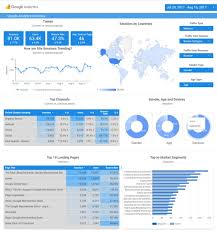There are two different methods to store and segment subscriber data within Marketing Cloud: Lists and Data Extensions. Lists have limited functionality, whereas Data Extensions provide full flexibility to store and relate subscriber information. Salesforce Marketing Cloud lists and data extensions are the primary ways to manage your subscriber data.
What is the difference between data extension and list in Marketing Cloud?
In short, lists are best used for specific email sends lacking advanced data or segmentation, whereas data extensions can be used for basically any type of communication or data management need. If the goal is to organize data with simplicity, go for lists.
What is data extension in Marketing Cloud?
A data extension is a table that contains your data. With Marketing Cloud Connect, push tracking data from the Marketing Cloud back to your Sales or Service Cloud orgs using Salesforce data extensions (SFDEs). Data extensions are also filterable.
What are the data extension limits for Marketing Cloud?
There is currently no limit for the amount of rows that can exist within a Data Extension. This means that, without Row Based Data Retention, a Data extension can grow exponentially without any real upper limit.
What is a list in Marketing Cloud?
Lists are a default way of storing data in Marketing Cloud Email Studio. You can set different attributes for your customers by using lists, which represent a collection of customers and provide a simple method for audience segmentation. These attributes are used to store the position of the customer in a given list.
List can be configured to send a welcome email when a subscriber opts in, and can have double opt-in.
You will also hear groups mentioned. Groups are smaller segments of a list.
When to Opt for Marketing Cloud Data Extensions
There are two primary scenarios that distinctly indicate the need for utilizing a data extension rather than a list:
Fluctuating Values Over Time:
- When a subscriber’s values vary over time, such as the number of transactions they had last month, it becomes challenging to predict these values on a month-to-month basis. In contrast, attributes like ‘Last Name’ are better suited as profile attributes because they remain consistent for a subscriber.
Data Relationship via a 3rd Data Point:
- If the required data is not directly associated with the subscriber but is linked through a third data point acting as a bridge, a data extension is warranted. For instance, consider pulling in the name of a subscriber’s ‘preferred mode of transportation.’ In this case, the transportation code, stored on the subscriber, serves as the link to the data extension containing transportation or vehicle codes and their corresponding names. Using the transportation code as the connecting factor allows the retrieval of the transportation method.














